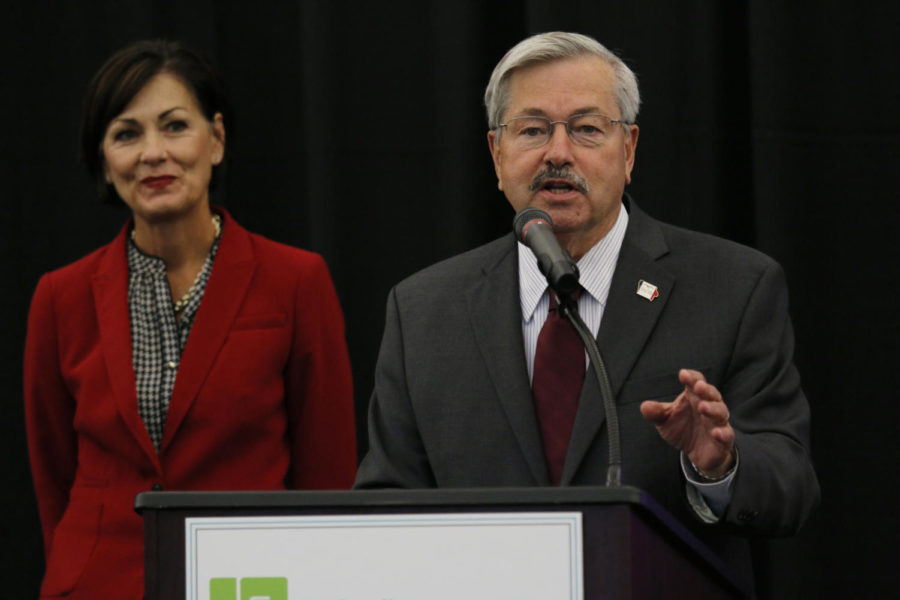Editorial: Branstad’s higher-ed budget cuts are questionable
Richard Martinez/Iowa State Dail
Gov. Terry Branstad’s veto of education funding disregards previous education goals he laid out with Lt. Gov. Kim Reynolds in 2011.
January 11, 2017
It’s a good thing Governor Branstad is proposing budget cuts in higher education. As anybody knows, what a state who’s struggling economically needs to do most is disinvest in its young people’s future, disinvest in its ability to attract other state’s intelligent young people to its own universities, and disinvest in what are its essential engines for economic development and stimulation. He’s made a good start.
He announced, Tuesday, $34 million in higher education budget cuts as part of a larger $110 million slash. And, though the Board of Regents have publicly verified that tuition rates are “locked-in” for 2017-2018, there is a murky future beyond. Recent increases in tuition have already stirred wide debate and opposition.
The defending claim is that higher education was one of the only sizable remaining sources for such a funding cut—a funding cut necessitated by a $37 million deficit in what the Board of Regents had requested and ultimately received. The other sources that were “saved” from cuts: K-12 schools, property tax credits and Medicaid.
Was this really the best route? Was there no other way?
Aside from spirited opposition in the state senate—in which some Democrats have argued Branstad ought to either dip into the State’s $728 million reserve fund, or reduce its recent corporate tax giveaways as an alternative—this Editorial Board believes there is simply no excuse for cutting funding for higher education in a time when it is most desperately needed.
Economic growth does not happen on its own. It is a process, and far from simply planting the seed there is a required watering, fertilizing and tending. This is where higher education comes in. The university system does more than simply produce qualified graduates that go on to work and create and produce—it is a mecca; a mecca for economic development.
Think Iowa State’s Research Park. Think the Ames to Des Moines Cultivation Corridor. Think the University of Iowa’s Hospitals and Clinics. While it is of course unclear the degree to which these proposed budget cuts would affect such institutions—if at all—there is an inherent implication in the cut that Iowa’s universities aren’t as much of a focus for the State as they have been in the past.
Iowa should be proud of its public universities. They are of excellent quality, possessing of an esteemed history and are arguably its most integral public institutions. It should brag of them. And how could the state realistically do such a thing in the shadow of corresponding budget cuts? Does it not value these institutions? Because that’s what Branstad’s actions imply.
This should have been the absolute last resort. The absolute final considered solution to a problem that could have realistically been addressed elsewise. And, instead, Branstad has chosen to pursue this solution in the face of all the above observations. What kind of message does that send?







